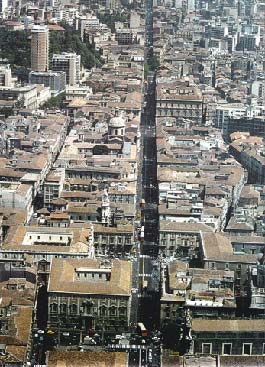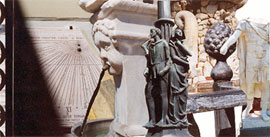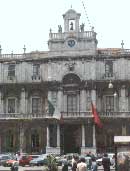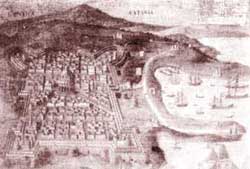

Catania
never was by nature a hegemonic city, instead an operating economic and
trading center,
a meeting point for people and cultures.
But never, even supinely, condescending toward the invaders.
To those that respected its identity was shown appreciation and loyalty
(in the case of the
Aragonese Kings); for bad rulers, Catania knew how to react and rebel.
|
Catania, in the
course of 2700  years of history, ( its foundations goes back to
730 bc), has lived years of history, ( its foundations goes back to
730 bc), has lived
times of splendour.
In the Roman age Catania was a flourishing city that built an
amphitheatre that for its size
 was second after the Coliseum. was second after the Coliseum.
During the Normand, Swabian and Aragonese domination’s were
constructed royal residences and for about a century was the
capital of a Kingdom.

At that historical moment the city was considered an important and
strategic stronghold for Frederick II of Swabia who had dreams to
bring the center of his empire to the Mediterranean, and who
ordered the construction of Castello Ursino.

Alfonso de Aragón chose Catania to found the first University of
Studies of Sicily,
(among the first of Italy) in 1434, and it was a cultural
reference point of the time.

|